Barry Halliwell: "This was a very niche area at the time"

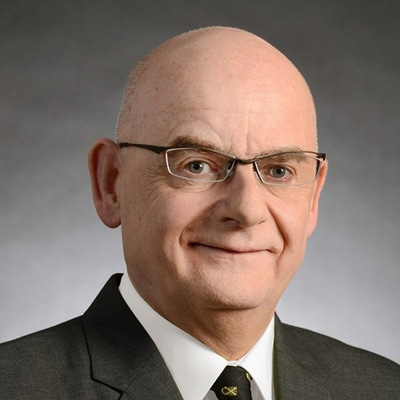
What drew you to your research field? What do you consider the most formative phase of your research career?
As explained in detail in [1-3], I was born on October 18, 1949 in Preston, a small town in the North of England known for its football club, large railway station and textile production but not for much else. Luckily for me, it did have an excellent grammar school. It was routinely expected that all Preston grammar school kids took 10 subjects at O-level, spanning a wide range. I find it sad that schools often now stream people very early into Arts or Science. I did especially well at History, Latin and French and for a long time considered going into the Arts and then Medicine. However, I did eventually opt for Science, and, with the encouragement of excellent teachers, sat for the Oxford entrance examination and interviews and passed (just about I suspect). It has often been said that Oxbridge at that time turned its nose up at state schools, but seven people from my year (in a small school in a backwater town) obtained scholarships at Oxford or Cambridge.
I arrived at St. Catherine’s College Oxford in early 1968 to study Biochemistry. This newly-approved subject (at Oxford) combined my interest in Chemistry with my medical leanings and seemed so ‘cutting edge’. The Oxford Biochemistry department was probably then the best in the UK and one of the best in the world, and still is now. I remember vividly Professors such as Eric Newsholme making metabolism come alive, and the (late) George Radda explaining spectroscopy with amazing clarity. The key to learning was the weekly tutorial with a College don. Here is a couple of references, go away and write an essay on topic X (no PubMed database then, so a lot of work with actual books and journals). Essay duly delivered and torn to pieces the next week (go away and rewrite). Yet this training means you end up able to search for information, evaluate it, condense it and write it down clearly. Another strength of Oxford Biochemistry training at the time was the heavy emphasis on Chemistry, a grounding which turned out to be an invaluable asset for me. Many life sciences courses globally have downplayed their Chemistry requirements, which I think is sad because understanding Chemistry enables clear understanding of enzyme mechanisms, human metabolism and other issues. In particular, in my research field of free radicals and antioxidants, much rubbish is published by authors who have not the remotest idea of fundamental chemical concepts.
In the final year of my Biochemistry degree, I did an honours research project on Plant Biochemistry, which I enjoyed so much that I transferred to the Botany School to complete a D.Phil. (the Oxford term for PhD) under the able supervision of Vernon Butt and Bob Whatley. I mainly worked on photorespiration, the pathway that plants use to recycle metabolites accidentally sent into the wrong direction when O2 instead of CO2 reacts with the first enzyme in the photosynthetic CO2 fixation pathway. We found out that hydrogen peroxide (H2O2) plays an important role in this process and I learned that plant organelles readily make H2O2 [4]. During this work, I also observed that illuminated chloroplasts reduce cytochrome c, and this was blocked by catalase. Yet H2O2 doesn’t reduce cytochrome c, it oxidises it. The solution to this conundrum came when I read the papers of Joe McCord and Irwin Fridovich published in 1968 and 1969, describing the isolation of superoxide dismutase (SOD, an enzyme specific for removal of a free radical) and showing how it could contaminate other proteins. I wondered if this was true of catalase. Indeed it was; one of my early papers described that it was the SOD contaminating the catalase that inhibited cytochrome c reduction, and chloroplasts were making superoxide free radical.
I moved to King’s College London as a lecturer (Assistant Professor) in 1974, determined to work in this new field of free radicals and antioxidants. This was a very niche area at the time; few people in the UK or even globally were interested in it, but the discovery of SOD eventually triggered an avalanche of studies. In a sense, I was lucky, as oxygen-derived species and antioxidants have ramified into all aspects of human life: cell signalling, metabolism, nutrition, disease, and ageing. So the basic work that my research group did has become very highly cited. If I had stayed with photorespiration, I might have done equally good work scientifically, but the impact would not have been there. I continued to work on plants for a while, and postulated a new metabolic pathway by which chloroplasts use ascorbate and reduced glutathione (GSH) to remove H2O2, now known as the Foyer-Halliwell-Asada cycle (Christine Foyer was my first PhD student, and has gone on to have a distinguished career in plant redox biology [5]). But soon, being in a medical school, I was drawn to problems of human disease and the role of free radicals/antioxidants in them, which is indeed complex, as I have summarized in depth [6,7]. I am proud of being one of the few biomedical scientists with a D.Phil. in Botany! If I had my time over again, I would have studied both medicine and science and become a clinician scientist, but that was not an obvious route in the UK in the 1960’s.
What is currently your favourite molecule?
Definitely ergothioneine (ET), a compound discovered in the 1900s (reviewed in [8]) and the subject of my talk at this FEBS conference. ET comes from diet, a major source is mushrooms. It is taken up from the intestines and distributed to all our body tissues (including the brain) by a specific transporter, retained in the body for weeks, and readily reabsorbed. These facts suggest that it is important to us; despite that, it has been neglected for decades [8]. We published in 2016 that low blood levels of ergothioneine are correlated with cognitive impairment in elderly humans, and it was later shown by us and others that low blood ergothioneine predicts increased risk of developing dementia, cardiovascular disease, macular degeneration, Parkinson’s disease and frailty [8,9]. Multiple experiments on iPSC, organoids and other models have revealed ergothioneine’s potential neuroprotective properties, suggesting a causal link. These neuroprotective actions seems partly due to ET’s antioxidant activity but it exerts many other neuroprotective mechanisms as well. Human clinical trials are underway: if ergothioneine can slow development and/or progression of age-related cognitive disorders it will be a blockbuster!
What do you consider your most important functions as a leader at the National University of Singapore (NUS)?
I joined NUS as a Visiting Professor in June 1998, and decided to stay in January 2000. It was an exciting time, NUS was an excellent teaching University (and still is, Education must never be relegated to second place) with some research strengths in physical sciences and mathematics, but few in life sciences. I spent nine years as Deputy President (Research & Technology) (DPRT), the equivalent of Vice-Chancellor Research, working with excellent NUS Presidents and Chairmen of A*STAR (Singapore’s Agency for Science, Technology and Research) to help build up research at NUS and in Singapore generally across the board, but particularly in Life Sciences. It was hard work but exhilarating; the DPRT has a unique helicopter view of the research across all the Departments, Schools and Faculties of a large comprehensive University, from Mathematics, Humanities, Social Sciences, Middle East Institute, Computing, Architecture, Chemistry, Law, Music, Materials Science, Engineering, AI and, of course, Medicine, my home faculty. Recruiting, retaining and regularly recognising the achievements of the highest quality faculty at all levels is paramount.
If you recruit the right staff and students and create the right environment, novel discoveries and intellectual property will flow. I strongly resisted blindly using sheer numbers of patents and spin-offs and position in the various University rankings as a performance indicator for NUS. Although NUS has done well in all of them, the real value of a University is its contributions to Society, both within Singapore and globally. As one example, Singapore has a rapidly-ageing population and when I visited all our schools and faculties, I identified over 200 researchers relevant to this issue and encouraged them to collaborate across disciplines, one example being collaborations between the Medical School and Music School to explore the role of music in the treatment and prevention of dementia.
What do you look for when selecting research staff and students for your research group?
I think they select your group as much as you select them. Basically, an intellectual curiosity, an ability to work well with others and a capacity (or at least willingness to attempt) to solve problems without being told what to do on a day to day basis. Regular lab meetings where everyone presents facilitate collaboration and develop presentation skills. A good academic background is essential, although I have observed that the best academically-qualified students are not always the best researchers. Of my two highest-achieving PhD students, one had a very unusual academic background (he started as an engineer) and the other an erratic performance – luckily he just scraped the upper second class degree needed to obtain a research scholarship.
References:
- Halliwell B. (2004) How I became a biochemist. IUBMB Life 56, 569–570
- Halliwell B. (2009) The wanderings of a free radical. Free Radic Biol Med. 46, 531-542.
- Halliwell B. (2013) An interview with Barry Halliwell. Trends Pharmacol Sci, 34, 301-2.
- Halliwell B, Butt VS. (1974) Oxidative decarboxylation of glycollate and glyoxylate by leaf peroxisomes. Biochem. J. 138, 217-224.
- Del Río LA. (2011) Redox pioneer: Professor Christine Helen Foyer. Antioxid Redox Signal.15, 2383-91.
- Halliwell B & Gutteridge JMC. (2015) Free Radicals in Biology and Medicine. Clarendon Press, Oxford (fifth edition), UK.
- Halliwell B. (2024) Understanding mechanisms of antioxidant action in health and disease. Nat Rev Mol Cell Biol. 25, 13-33.
- Halliwell B, Tang RMY, Cheah IK. (2023) Diet-derived antioxidants: The special case of ergothioneine. Ann. Rev. Food Sci. Technol. 14, 323-345.
- Halliwell B & Cheah IK. (2024) Are age-related neurodegenerative diseases caused by a lack of the diet-derived compound ergothioneine? Free Radic. Biol. Med. 217, 60–67
Webpage: https://medicine.nus.edu.sg/bch/faculty/barry-halliwell/
More information on the FAOBMB Lecture at the FEBS Congress
Barry Halliwell will deliver the FAOBMB Lecture at the 49th FEBS Congress in Istanbul, Türkiye, on Tuesday 8 July 2025 on “Understanding antioxidants in health and disease: the special case of ergothioneine”.
Photo by Mike Enerio on Unsplash.
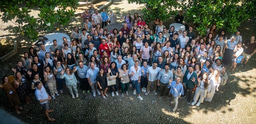
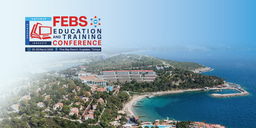
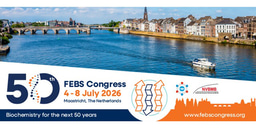

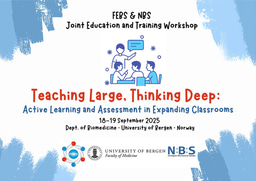
Join the FEBS Network today
Joining the FEBS Network’s molecular life sciences community enables you to access special content on the site, present your profile, 'follow' contributors, 'comment' on and 'like' content, post your own content, and set up a tailored email digest for updates.